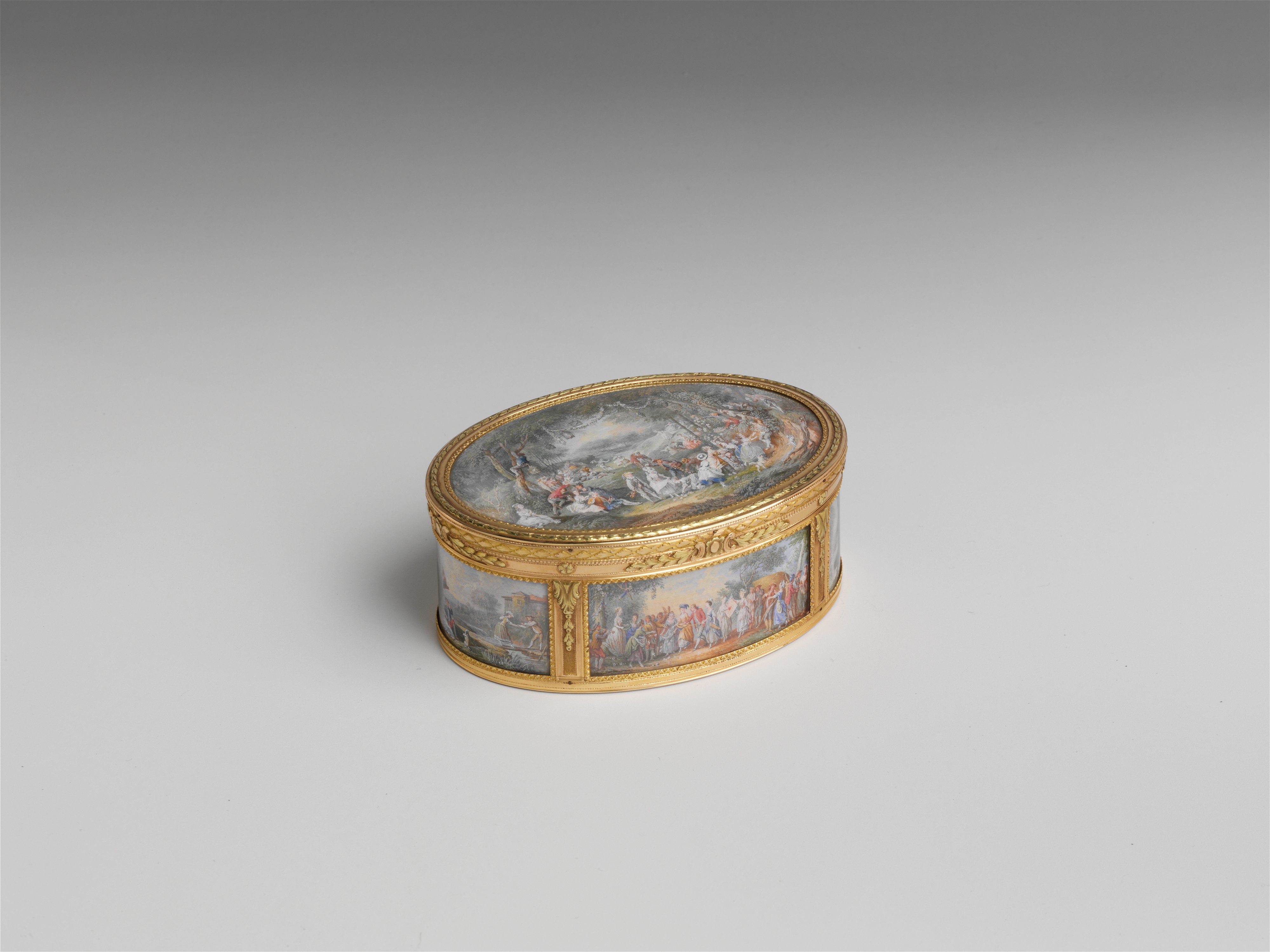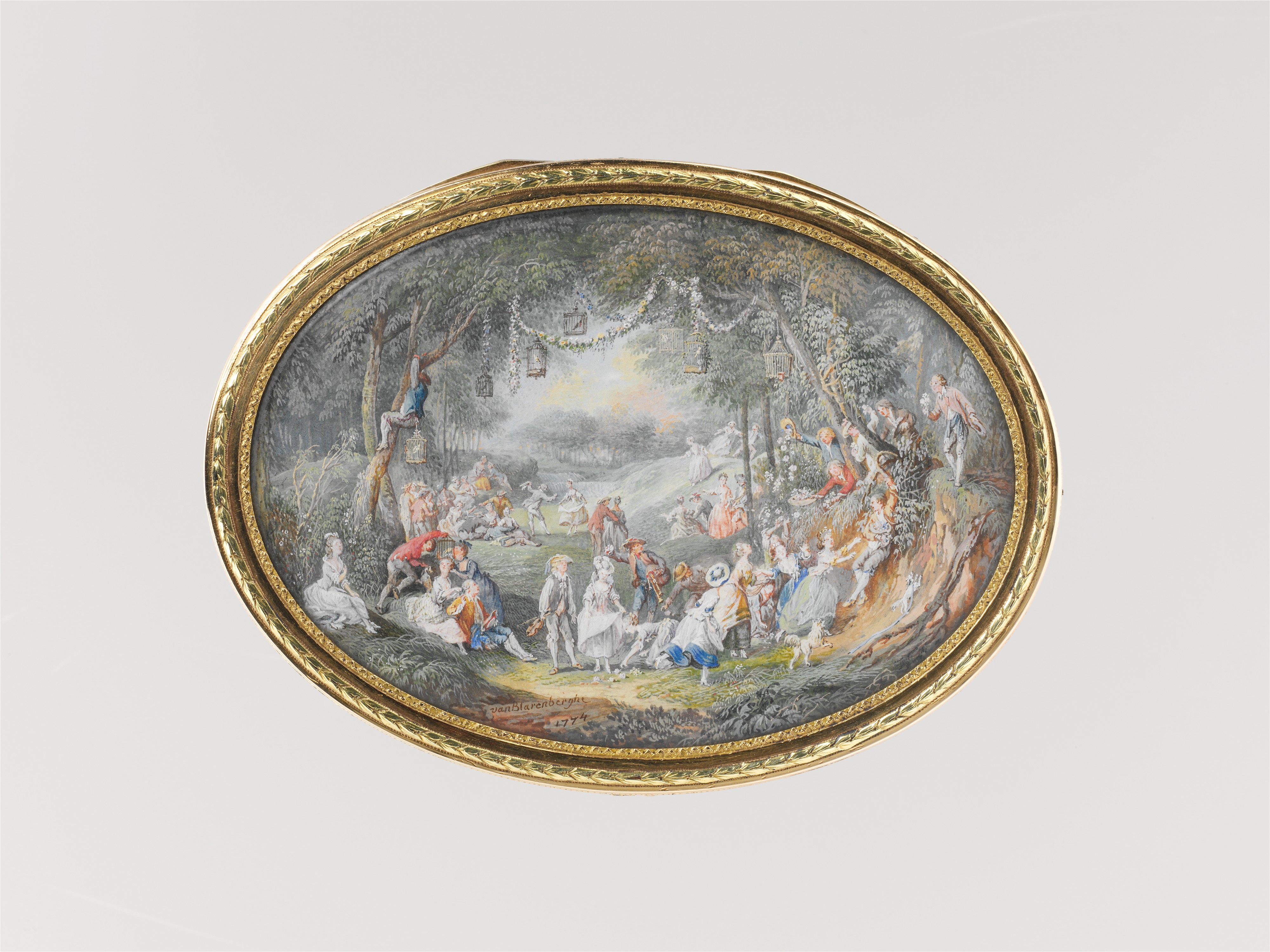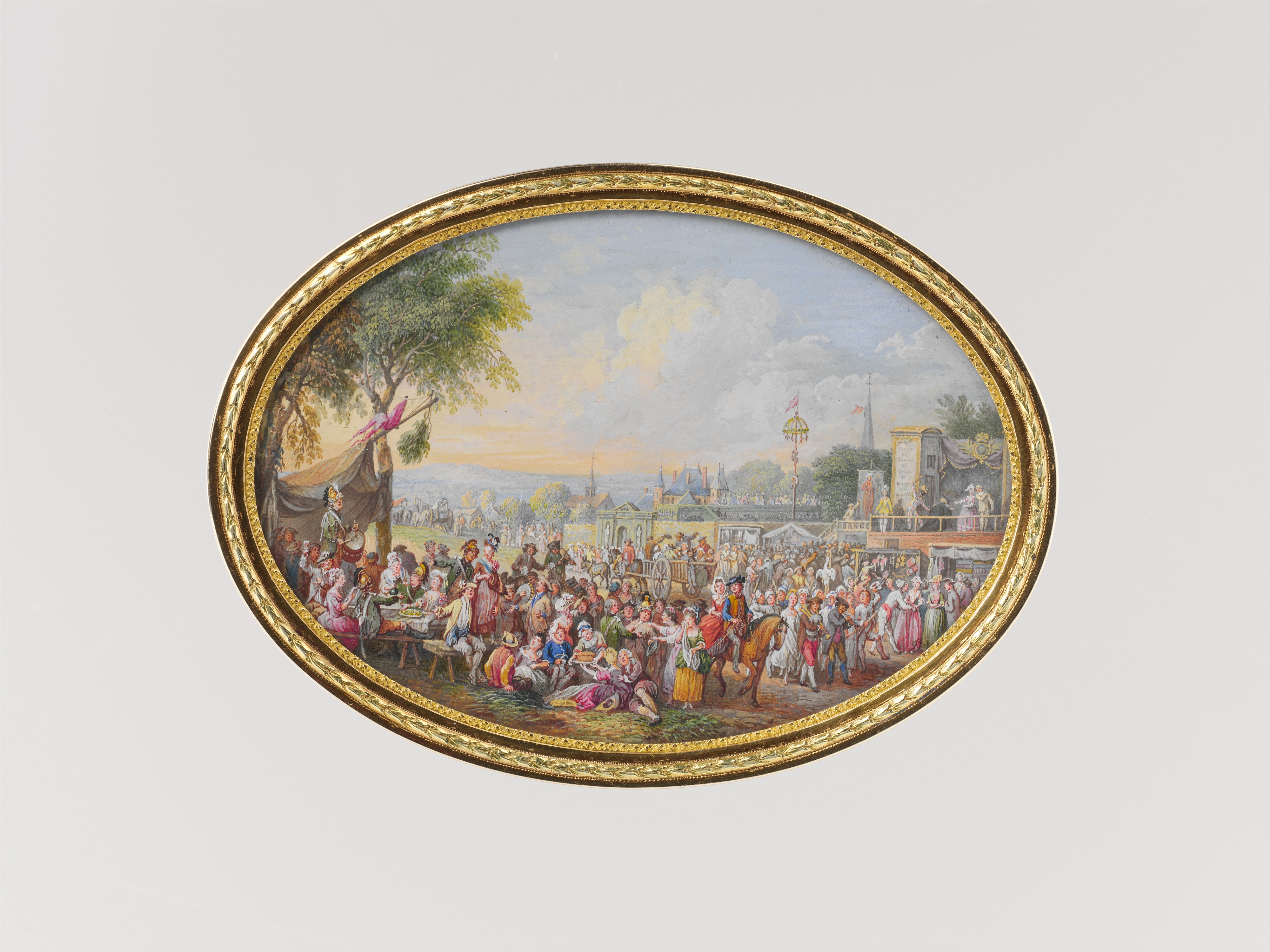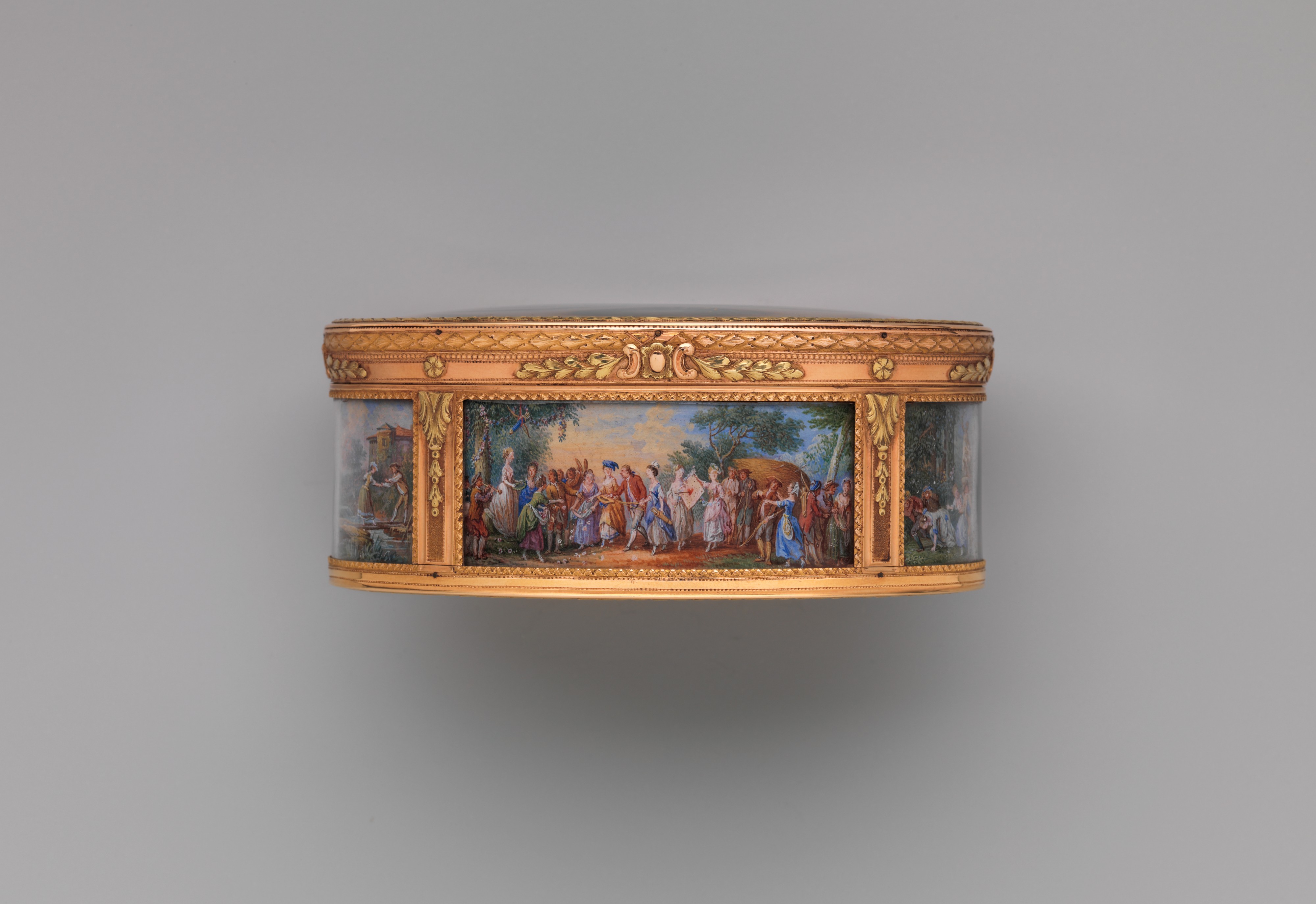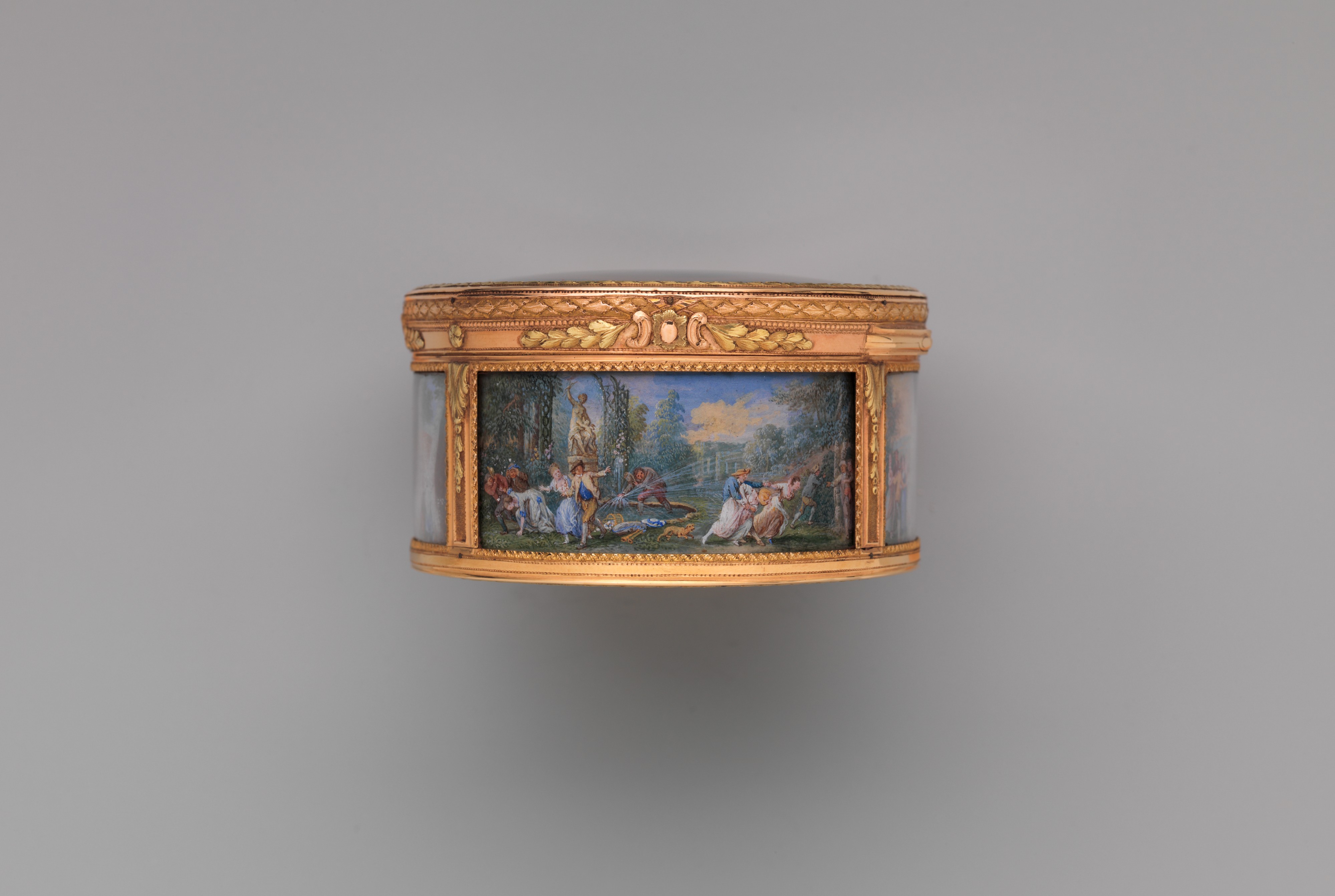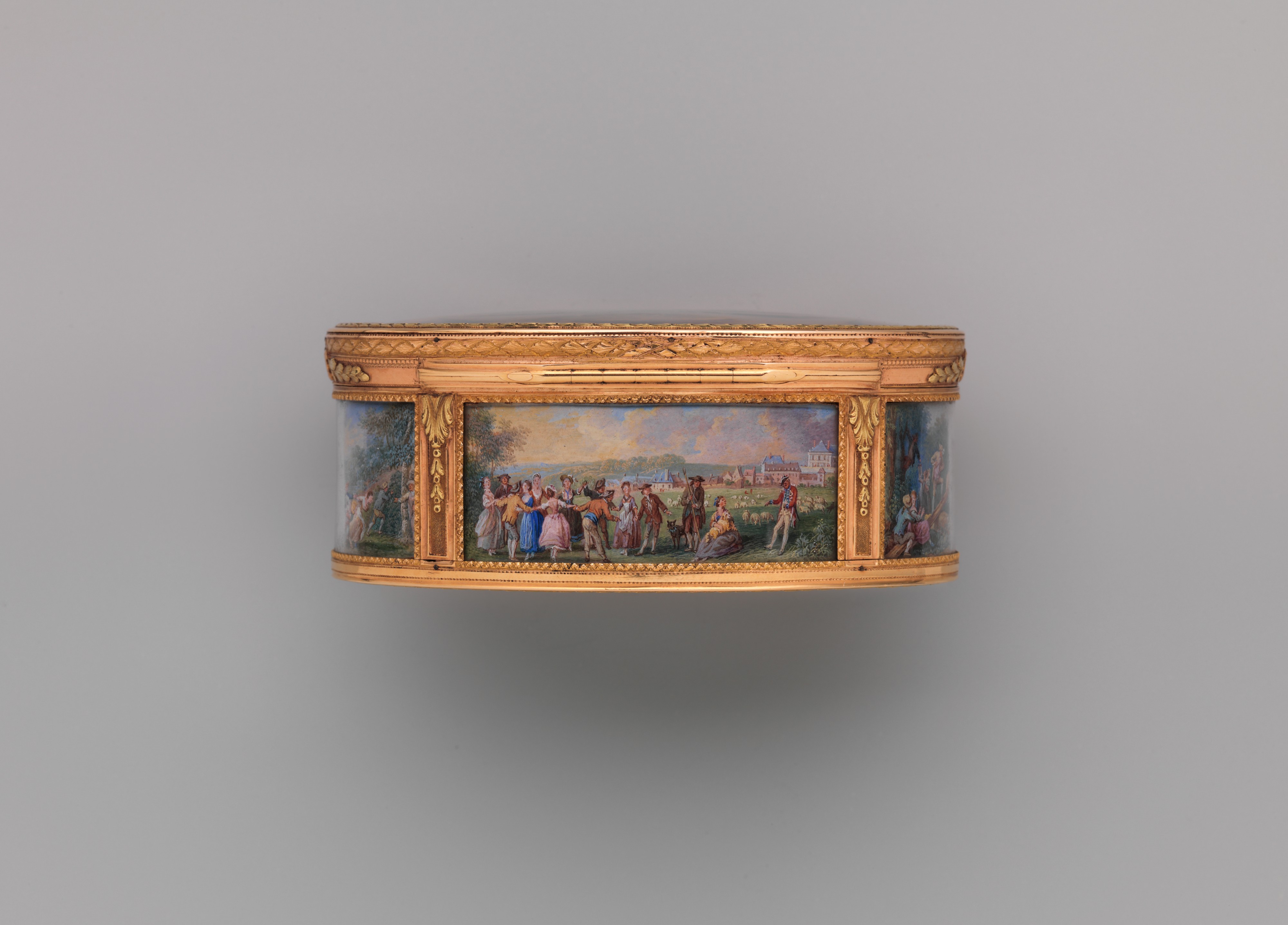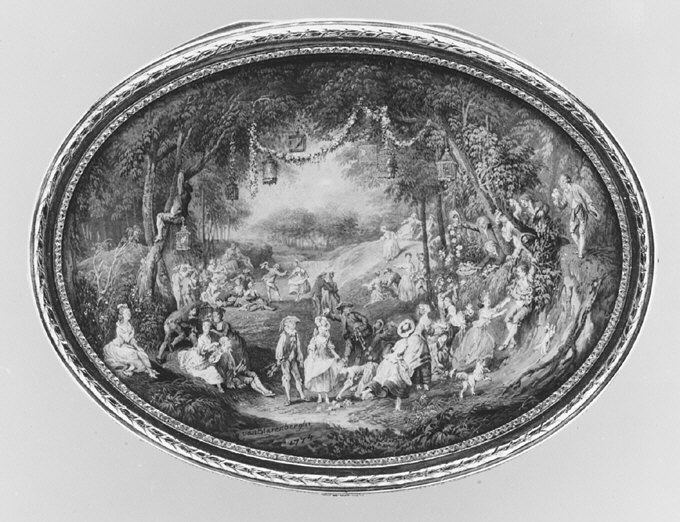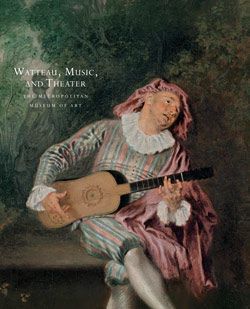Snuffbox with six scenes of country pastimes
Box by Pierre François Drais French
Miniatures by Louis Nicolas van Blarenberghe French
and Henri Joseph van Blarenberghe French
Not on view
In eighteenth-century Europe, Paris led the production of high-quality luxury goods. Parisian goldsmiths made a wide range of small, personal articles such as snuffboxes; étuis to hold sealing wax, tweezers, or utensils for sewing; souvenirs, which contained thin ivory tablets for note taking; and shuttles for knotting lace. Gold snuffboxes and boxes decorated with portrait miniatures were prized and frequently given as royal gifts, often to ambassadors or members of the court in lieu of cash payments for their services. Coveted and admired, these boxes were produced from a variety of materials. The best were skillfully made of gold and embellished with diamonds, enameled decoration, lacquer, and other luxurious materials. By the middle of the century, the taking of snuff had become an entrenched social ritual, and the snuffbox, too, had become an important social prop. Snuffboxes were considered highly fashionable accessories, with some merchants advertising new boxes with each change of season. The popularity of snuffboxes extended to all levels of society, and for those who could not afford gold, boxes were produced in less expensive materials such as silver, tortoiseshell, porcelain, or domestically produced lacquer.
There are six marks on the oval box, including the Paris mark for 1774–75, and the mark of Pierre-François Drais, a master in 1763, working to 1788. The top shows a delicate fête champêtre, signed and dated (at the bottom) van Blarenberghe / 1744: attended by revelers, a peasant couple, a young man with a violin and a young woman gathering flowers in her overskirt, stand in a country landscape under overarching trees hung with garlands of flowers and caged birds. The composition is elegantly shaped to fit the field. The scenes around the sides of the box are An Archery Match, A Youth Spurting Water from a Fountain, A Round Dance, and Couples on a Seesaw.
This object has no recorded history prior to the death in 1914 of Pierpont Morgan, and since then, the vignette on the base has been described as a country fair near a château. It seems likely that the miniature represents The Fair at Bezons, which was painted by Pater and Lancret and had been the subject of the reception piece submitted in 1725 to the Académie Royale de Peinture et de Sculpture by François Octavien. In the foreground at the left, a happy crowd takes refreshment outside a victualler's tent. Behind this group, visitors arrive and depart in wagons, one horseback, and on foot along a diagonal path lined with booths, and still further back is a village with a church and several large buildings, and the wall and gate of an estate. At the right, a crier draws the interest of the passing crowd to an elaborate outdoor stage where Harlequin raises his bat and Pierrot engages the attentions of a lady.
Due to rights restrictions, this image cannot be enlarged, viewed at full screen, or downloaded.
This artwork is meant to be viewed from right to left. Scroll left to view more.


